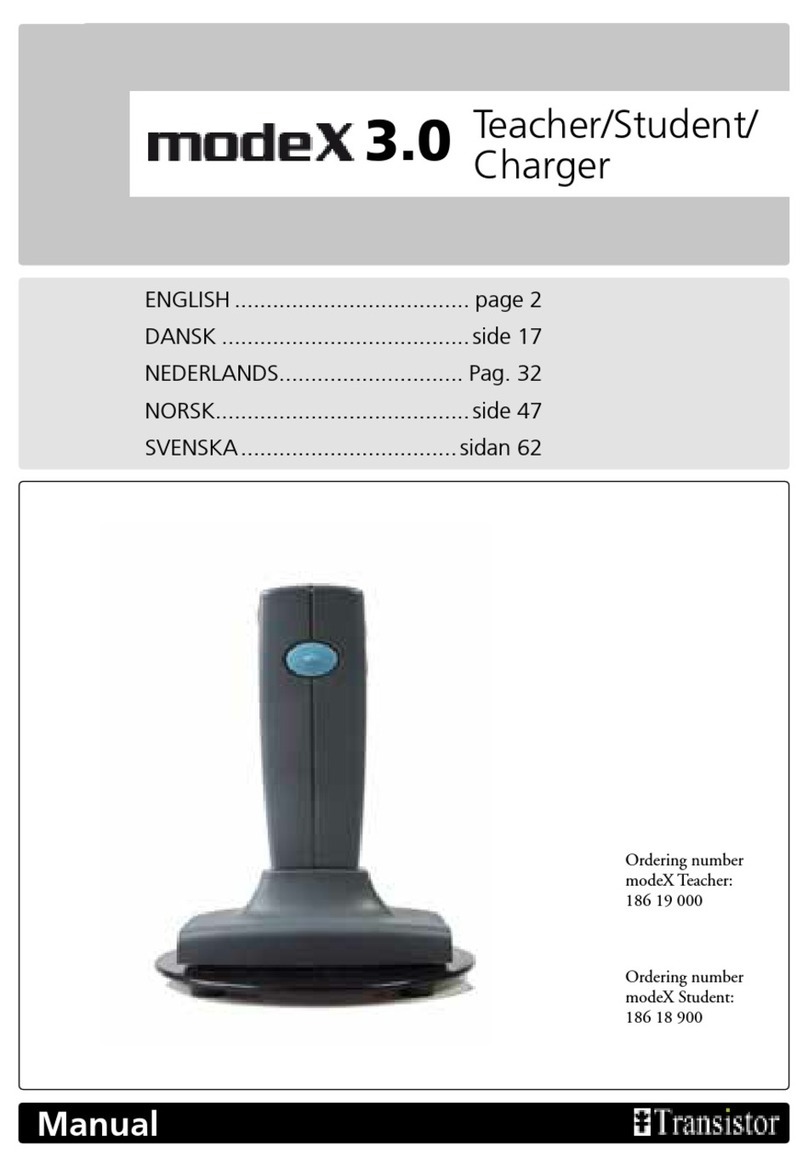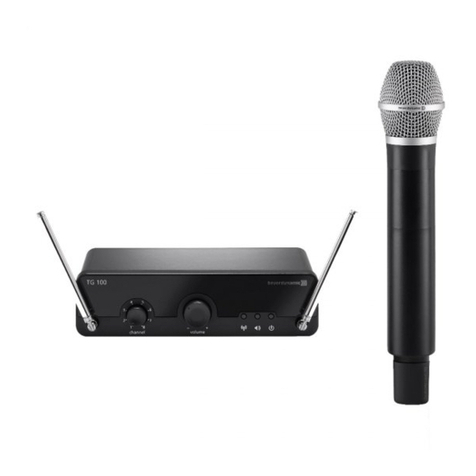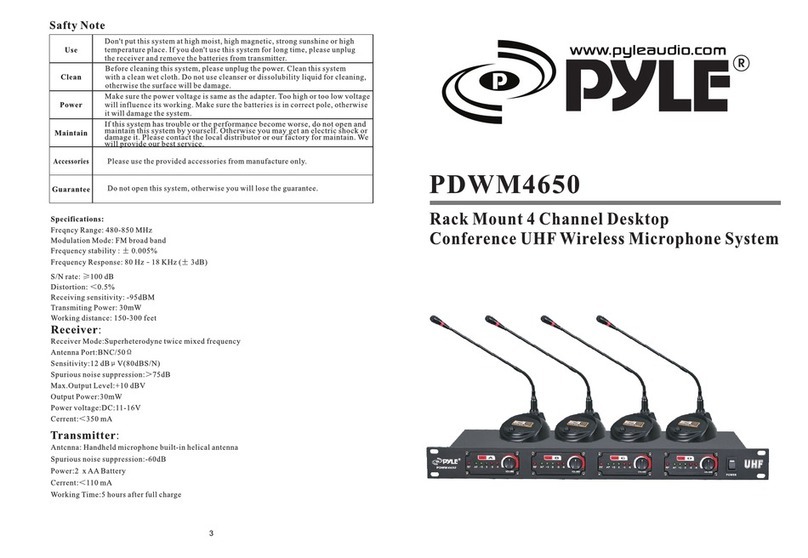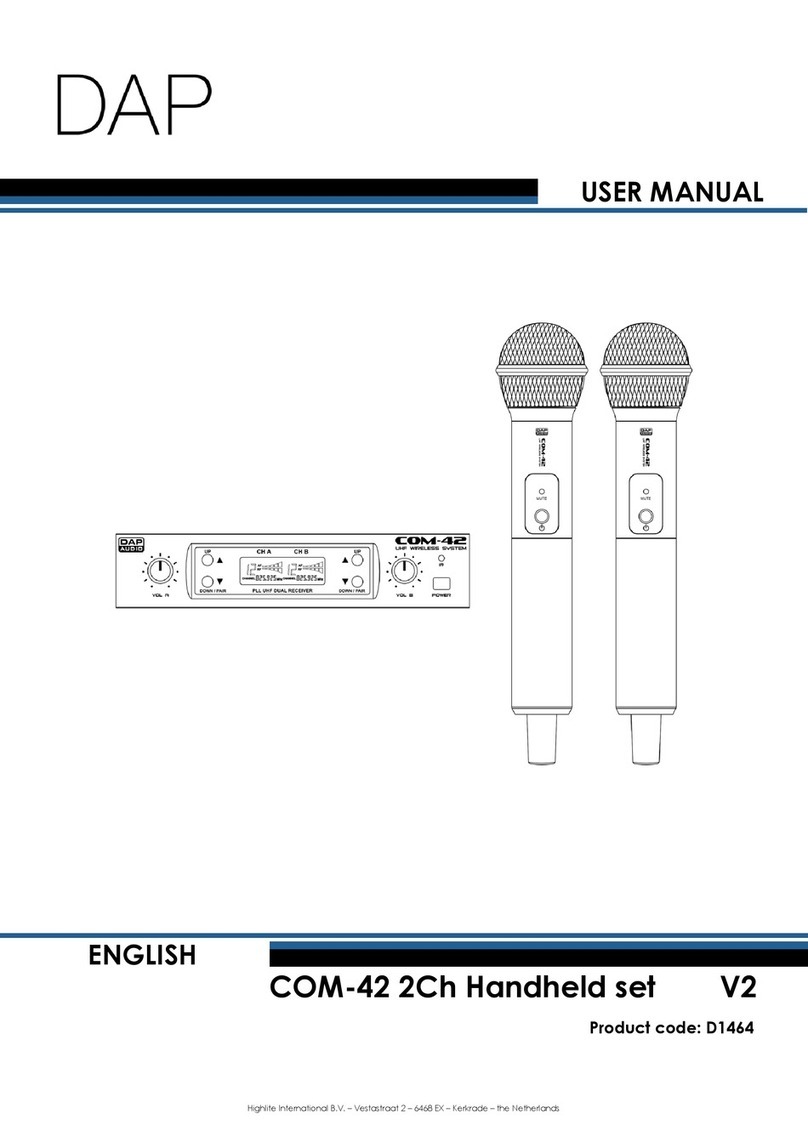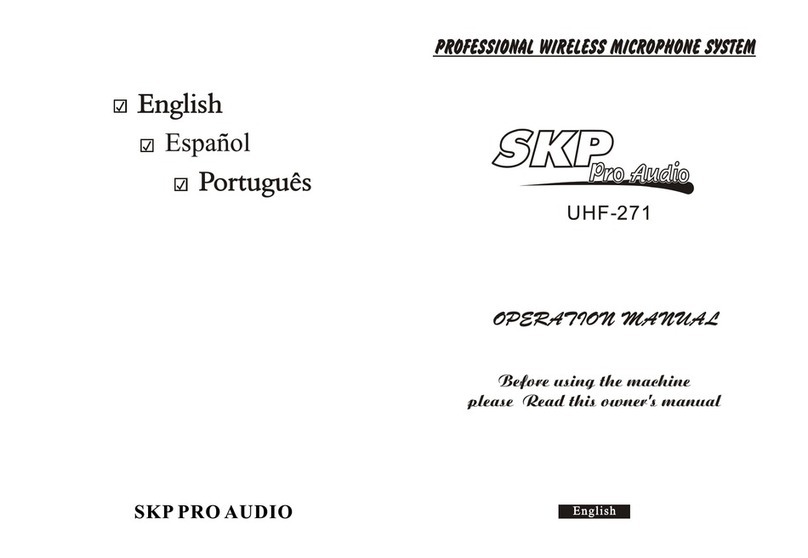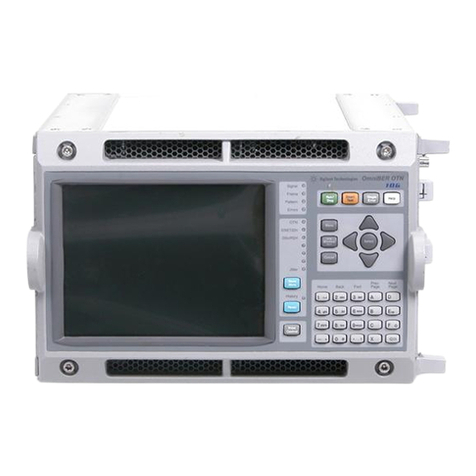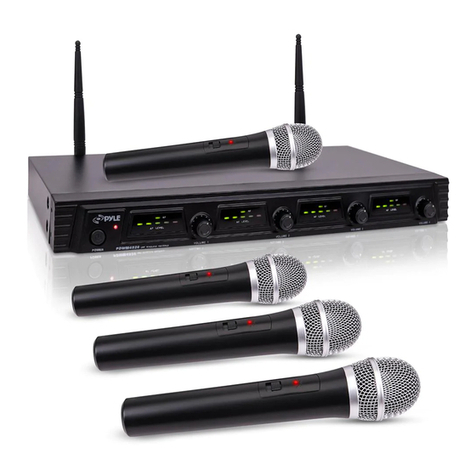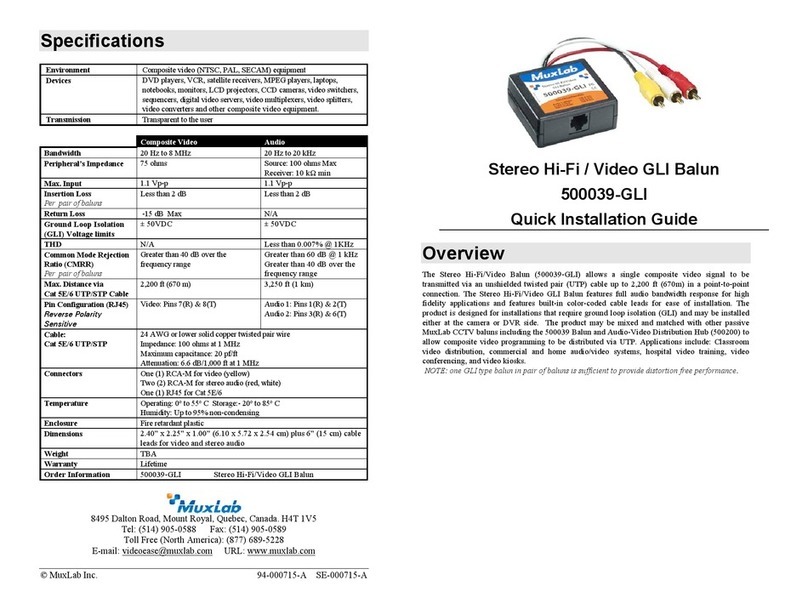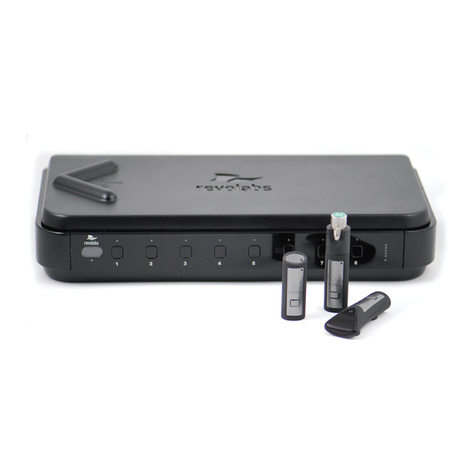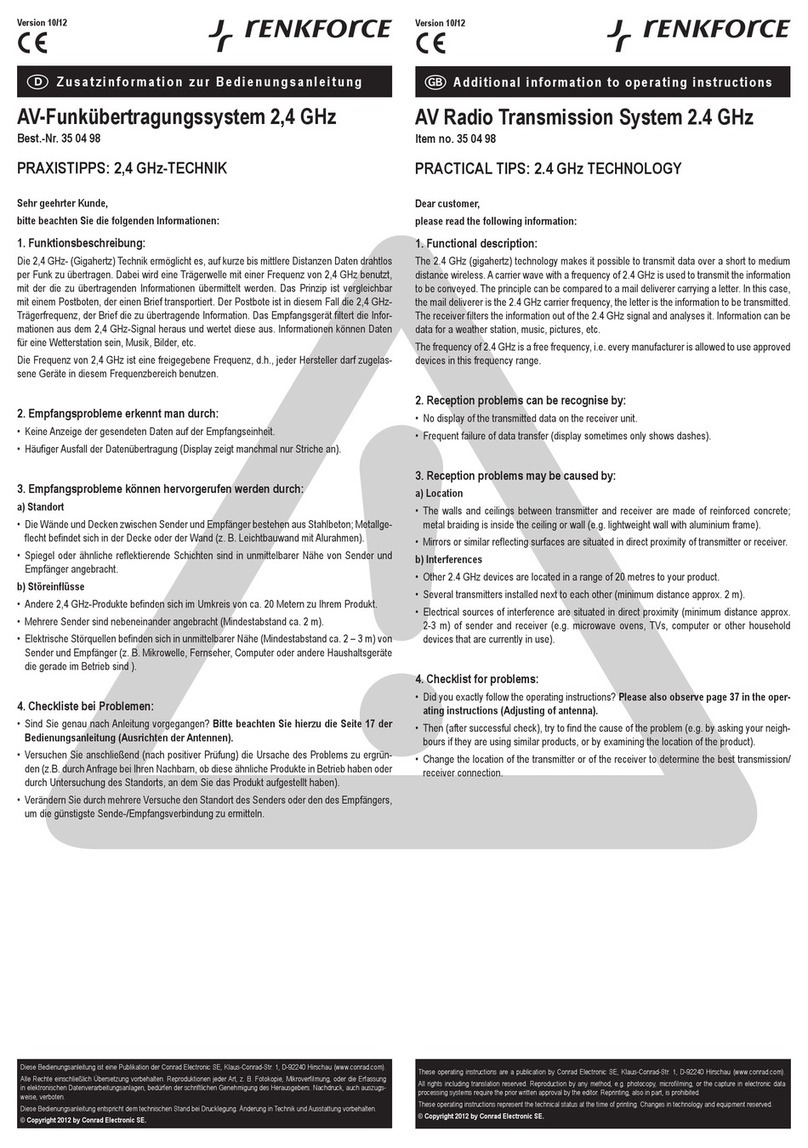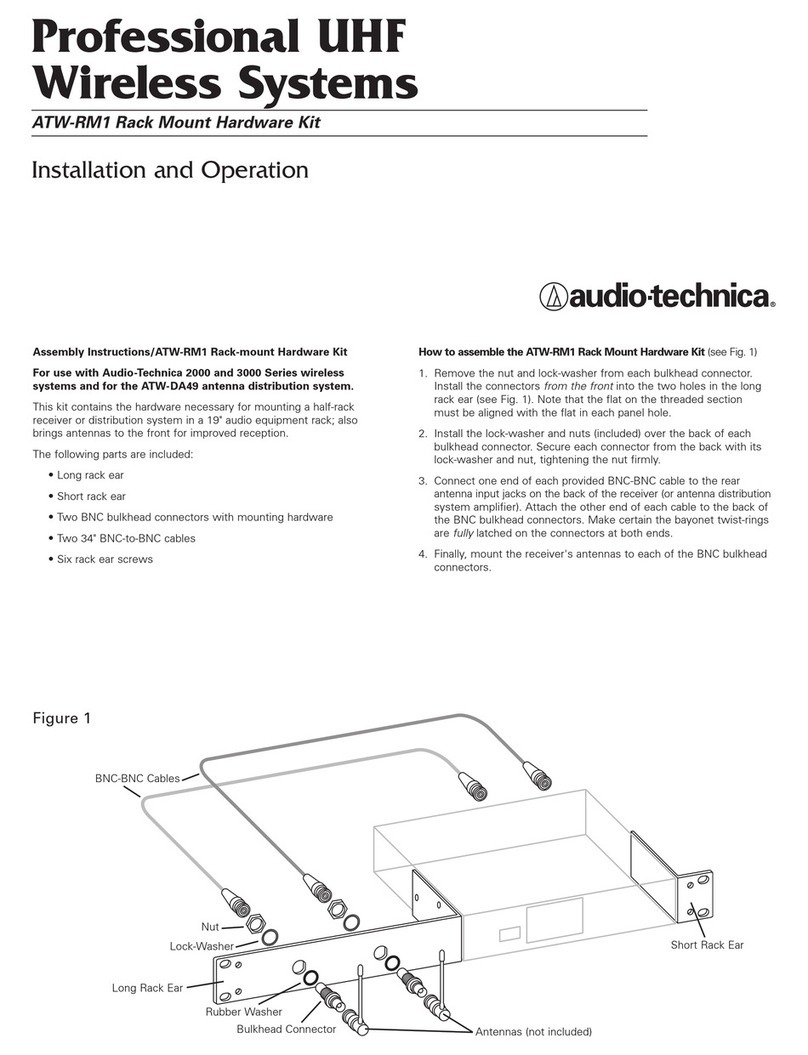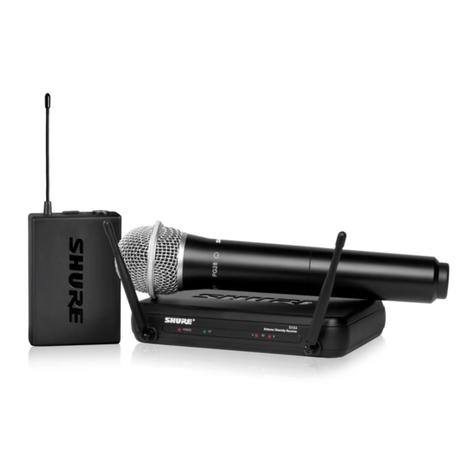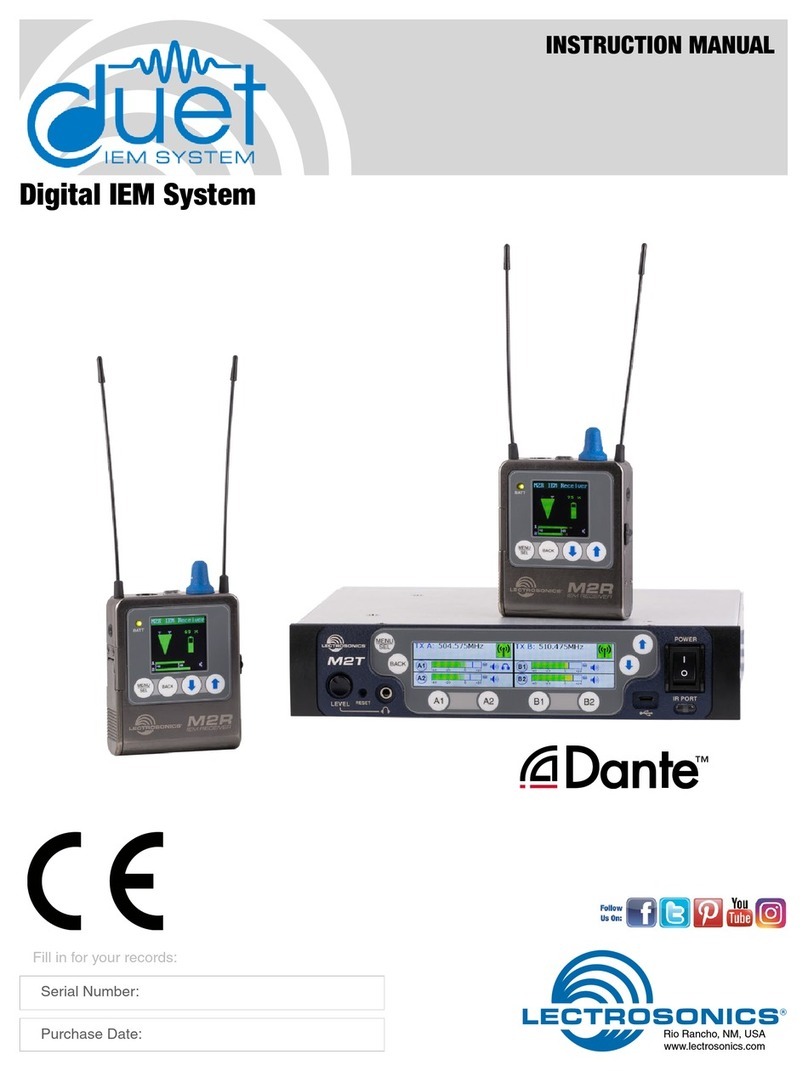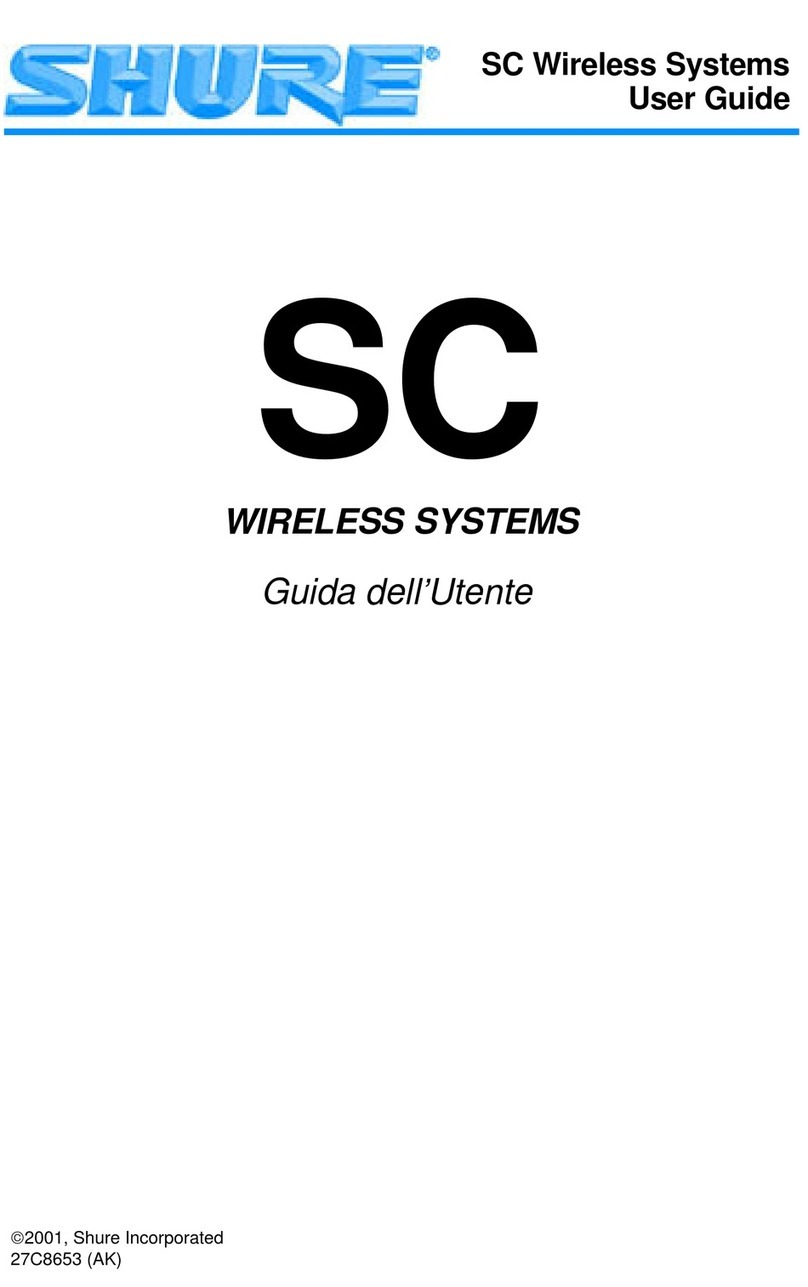Transistor Transett T-SIGN v2 User manual

Transett T-SIGN v2
ENGLISH: ............................................................................................ page 2
Drilling template .............................................................................. page 10
Manual

2
Content
User Manual for Transett T-SIGN
What’s in the box .......................................................................................3
About Transett T-SIGN..............................................................................3
Set up/ Installation instructions for Transett T-SIGN .............................3
Normal operation mode ..........................................................................3
Installation (refer to the enclosed Quick Guide).................................4
Calibration mode.......................................................................................5
Technical data ................................................................................................8
Cleaning and maintenance ........................................................................9
Repairs .............................................................................................................9
Waste disposal ...............................................................................................9
Drilling template............................................................................................10
ENGLISH

3
User Manual for Transett T-SIGN
What’s in the box
About Transett T-SIGN
T-SIGN, the active hearing loop indicator is designed to indicate how
a hearing loop functions. T-SIGN is programmed with various kinds
of indications that reflects how well the sound level is transmitted via
the hearing loop.
Set up/ Installation instructions for Transett T-SIGN
Normal operation mode
In order to run T-SIGN in normal operation mode start it up by
plugging in the power and let it run its startup sequence for approx.
ten seconds. During the startup sequence it indicates which program
it runs by the number of green flashes it does. Program one gives
3. DIP - switches
Power Input
1. Brightness knob
2. Sensitivity knob
External
sensor
input
x1
x2
x5
x2
x1
(optional)
External sensor
x1
ENGLISH

4
one flash and program two gives two flashes (see below for program
characteristics).
Very weak or no signal: T-SIGN is dark
Weak signal: Flashes green in a soft manner
Normal signal: Steady green light
Strong signal: Steady red light
Installation (Refer to the enclosed Quick Guide)
1. Preparations before the setup: A functioning hearing loop setup
in accordance with the SIS 60118-4 standard and a device providing
sound source to the hearing loop, e.g. a microphone, TV or a
computer.
2. Choose an appropriate place for T-SIGN. It is not recommended to
mount T-SIGN close to electronic devices due to signal interference.
3. Position T-SIGN at or nearby the chosen mounting place and
connect power to it. Make sure the hearing loop is not in use. Verify
that there is no signal interference that aects T-SIGN when the
hearing loop is not in use. This is shown by that T-SIGN remains
dark when it has been turned on. If T-SIGN is flashing or is indicating
steady green with the hearing loop turned o then consider a
dierent mounting location with less signal interference from the
surroundings. Depending on the magnetic field strength from the
hearing loop, at the chosen mounting location, sensitivity needs to
be adjusted on T-SIGN. A high sensitivity setting in combination with
background signal interference might cause the T-SIGN to show false
indications from the hearing loop.
4. Calibrate T-SIGN in accordance with the instructions in paragraph
”Calibration” below. After successful calibration continue with step 5.
5. Drill two screws onto the wall according to the enclosed drilling
template (page 9) and mount T-SIGN in place.
ENGLISH

5
Calibration
Calibration is done in order for T-SIGN to show correct display mode
(dark/soft flashing green/steady green/red) in relation to magnetic
field strength. It is made to that T-SIGN works well in regard to the SIS
60118-4 standard. When in calibration mode, sensitivity is adjusted so
that T-SIGN changes color from green to red when the magnetic field
strength at the listening position (most likely NOT at the mounting
spot) is 400 mA/m.
How to calibrate T-SIGN:
1. Turn o T-SIGN by unplugging the DC connector or unplug the
power supply. Wait a few seconds until it has shut down.
2. Turn the light intensity knob to minimum (fully counter clockwise).
3. Turn on T-SIGN by plugging in the DC connector or by plugging in
the power supply.
4. After that T-SIGN has made one or two green flashes (depending
on program selection) turn the light intensity knob to maximum (fully
clockwise). This must be done within four seconds after the green
flash(es).
5. T-SIGN now indicates that it is in Calibration mode by doing two
short green double flashes.
6. Calibration is done in two dierent ways (A or B):
A) Supply the hearing loop with a 1 kHz steady or pulsating sinus
tone.
B) Supply the hearing loop with continuous speech, e.g. via a
microphone/TV/computer.
7. In the above cases (6A and 6B), make sure the hearing loop
amplifier reaches its compression regime. Many loop amplifier have
a compression indicator indicating this. If not, use a relatively strong
signal input for the amplifier. If the hearing loop is adjusted correctly,
it will now generate a magnetic field strength of 400 mA/m at the
listening position. If a field strength meter is available, verify the
magnetic field strength at the typical listening position.
ENGLISH

6
8. Adjust T-SIGN sensitivity knob with the supplied screwdriver to that
T-SIGN just turns red (or just showing red in peaks if using a pulsating
sinus tone, or red in peaks if using a speech signal).
9. If it’s not possible to reach red color shift in the previous step, then
T-SIGN won’t be able to indicate correct display (dark/soft flashing
green/steady green/red ). In that case use the external sensor by
plugging it into the external sensor input and position the external
sensor closer to the hearing loop (normally downwards if the hearing
loop is floor-mounted). Repeat step 8. Another option is to mount
T-SIGN in a dierent location closer to the hearing loop and repeat
step 8.
10. To end Calibration mode pull out the DC adapter, wait
approximately five seconds and then reconnect the DC adapter again.
ENGLISH
Indications (referencing green to red color shift during
calibration):
• No signal ( < -16 dB) : Dark display
• Weak signal (<-10 dB to -16 dB) : Soft flashing green display
• Normal signal (0 dB to -10 dB): Steady green display
• Strong signal (> 0 dB): Steady red display
Other configurations
There are some additional configurations that can be made via
DIP-switches. The switches are accessible via the backside of
the T-SIGN housing and are located on the circuit board. The
following configurations can be made (default settings shown in
Bold):
• DIP-sw 1: Automatic control of light intensity related to
surrounding light (o/on).
• DIP-sw 2: Reduce sensitivity for weak signal display with 3
dB (o/on). This can be a good feature when high sensitivity is
needed in combination with some surrounding interference.

7
ENGLISH
• DIP-sw 3: Change indication of strong signal from a steady red light
to flashing red light (o/on).
• DIP-sw 4: Program selection 1 & 2(o/on).
Program characteristics program 1:
Program 1 is a program where T-SIGN reacts relatively fast to
changes in magnetic field strength. It can be e.g. in a teaching
situation where the speaker is interested in knowing that the
correct microphone technique is used.
• From dark to some indication: 2 sec
• From weak to normal signal indication: 2 sec
• From normal to strong signal indication: 4 sec
• From strong to normal signal indication: 3 sec
• From normal to weak signal indication: 12-15 sec
• Time to dark T-SIGN when no signal detected: 3 sec

8
ENGLISH / NEDERLANDS / NORSK / SVENSKA
ENGLISH
Technical data
• Input power: 15 V, 1A via external power supply 110 – 230 V AC
• External sensor input: Use external sensor for T-SIGN
• Power consumption: 1 W
• Measurements: 15 cm (W) x 18 cm (H) x 4,5 cm (D)
• Weight: 360 g
• Color: Aluminum
Sensitivity, transition from normal to strong indication (steady
green to red color light)
• Sensitivity knob in min position: + 9 dB signal (1 kHz, ref 400 mA/m)
• Sensitivity knob in max position: - 22 dB signal (1 kHz, ref 400 mA/m)
• Frequency range: 300 Hz – 2000 Hz (rel -3 dB)
Program characteristics program 2:
Program 2 is the default program where T-SIGN reacts slower to
changes in magnetic field strength. This is useful in public venues
and where the speaker can’t aect the level of the sound. A normal
indication shows that the hearing loop is functional and within
correct limits.
• From dark to some indication: 5 sec
• From weak to normal signal indication: 4 sec
• From normal to strong signal indication: 30 - 45 sec
• From strong to normal signal indication: 3 sec
• From normal to weak signal indication: 2 – 4 minutes
• Time to dark T-SIGN when no signal detected: 60 sec
The above program characteristics are indicative numbers for
a continuous speech signal and will vary depending on speech
content, amplifier AGC setting and level of magnetic field strength.

9
ENGLISH / NEDERLANDS / NORSK / SVENSKA ENGLISH
Cleaning and maintenance
Use a damp cloth to wipe it on the outside. Never use cleaning
products or solvents.
Repairs
If your product malfunctions, it must be repaired by a qualified
technician. Do not attempt to open the case of the device since this
would invalidate the warranty. If your product requires service, please
contact your hearing care professional for assistance.
Waste disposal
This product contains electrical or electronic equipment and
should be disposed of carefully in the interests of your safety
and the environment. Please contact your local hearing care
professional concerning disposal of the product.

10
Drilling template
18 mm
25 mm Screws : 4-5 x 25mm
Plugs : 6 x 30mm
Drill with plugs : 6mm
ca 1 mm
22 mm
100 mm

11

850000037. Rev 5, 2023-06
SVERIGE / SERVICE:
AB Transistor Sweden
Bergkällavägen 23
192 79 Sollentuna
Tel: 08-545 536 30
Fax: 08-545 536 39
info@transistor.se
www.transistor.se
INTERNATIONAL INQUIRIES:
AB Transistor Sweden
Bergkällavägen 23
SE-192 79 Sollentuna, Sweden
Tel: +46 8 545 536 30
Fax: +46 8 545 536 39
info@transistor.se
www.transistor.se
Table of contents
Other Transistor Microphone System manuals
